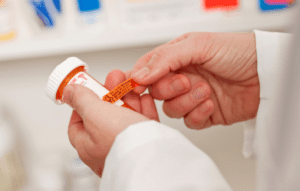The Trulicity Lawsuit Landscape: What You Need to Know
The Trulicity Lawsuit Landscape: What You Need to Know
Blog Article
Understanding Your Legal Civil Liberty in a Dangerous Drug Lawsuit
In the realm of drugs, navigating the complexities of an unsafe medicine legal action can be intimidating. As people come to be increasingly mindful of the possible threats related to particular drugs, understanding their lawful civil liberties ends up being extremely important (Trulicity Lawsuit). From figuring out the legal basis for filing a claim to considering the options between a class activity and a specific claim, there are vital factors to consider to be made. The ins and outs of seeking compensatory problems and the relevance of adhering to the law of restrictions add layers of intricacy to the process. However, with the guidance of legal guidance, people can start a trip to insist their rights and look for justice when faced with injury created by harmful drugs.
Legal Basis for Claims
Discovering the lawful premises for pursuing a hazardous medicine claim calls for a detailed understanding of appropriate statutes and criteria. When taking into consideration lawsuit against a pharmaceutical business for a dangerous medicine, one have to establish that the medication in inquiry posed unreasonable risks that were not properly revealed to customers. This commonly involves demonstrating that the medicine supplier fell short to warn about understood threats, misstated the medication's security or effectiveness, or engaged in illegal advertising and marketing practices.
To do well in a harmful medication suit, complainants commonly depend on legal theories such as oversight, rigorous obligation, or breach of service warranty. Neglect claims say that the maker did not exercise practical care in guaranteeing the security of the drug.
Kinds Of Compensatory Damages
Compensatory problems in a harmful medication claim encompass monetary restitution awarded to complainants to make up for losses sustained as a result of the damage brought on by the drug. These problems are designed to make the victim whole once again, both economically and non-economically. There are 2 main kinds of compensatory damages that might be awarded in a hazardous medicine legal action: financial problems and non-economic damages.

Both financial and non-economic offsetting problems play an essential role in guaranteeing that people hurt by dangerous medications receive ideal payment for their losses.
Statute of Limitations

Missing the law of constraints target date can have serious consequences, as it might cause the instance being dismissed by the court. Once the law of restrictions has actually expired, the plaintiff might lose the right to look for legal choice against the event responsible for the harm triggered by the unsafe medicine. Therefore, it is important for people thinking about a dangerous medicine claim use this link to seek advice from with a certified attorney promptly to abide and comprehend with the appropriate statute of constraints in their situation.
Course Action Vs. Person Claims
Offered the varying statute of limitations in dangerous medicine legal actions, people need to carefully weigh the decision between seeking a course activity or a private legal action. Class activity legal actions entail a team of plaintiffs jointly taking legal action against an offender, usually a pharmaceutical company, for the exact same issue - in this case, harm caused by a dangerous drug.
On the other hand, individual lawsuits use more autonomy and control to the complainant. By going after an individual claim, an individual can tailor the legal strategy to their specific situation, potentially bring about an extra desirable and personalized outcome. However, specific suits can be extra time-consuming, expensive, and may result in reduced payment contrasted to an effective course activity lawsuit. Ultimately, the decision between a class activity and a private claim should be based on the individual's circumstances, desired level of participation, and the legal recommendations obtained.
Looking For Legal Guidance
In navigating the intricacies of a hazardous medication legal action, securing experienced lawful advice is vital for guaranteeing a solid and educated legal strategy. When looking for legal guidance for an unsafe drug suit, it is vital to find a law office or lawyer with experience in pharmaceutical lawsuits. These instances commonly include intricate medical and clinical information, needing an attorney that understands both the legal elements and the medical subtleties associated with such legal actions.
Specialist legal advise can aid individuals understand their civil liberties, analyze the stamina of their case, and browse the intricate legal procedures linked with hazardous drug suits. Furthermore, a proficient attorney can offer guidance on whether to pursue a private legal action or sign up with a class-action lawsuit, based upon the specific scenarios of the situation.
Additionally, legal advice can help in collecting evidence, preparing lawful files, discussing with pharmaceutical business or their lawful representatives, and representing clients in court if the situation mosts likely to test. By enlisting the support of knowledgeable lawful specialists, people can raise their chances of accomplishing a beneficial outcome in a harmful medicine suit.

Conclusion
Finally, understanding your legal rights in a harmful medicine claim is essential in looking for payment for any damage caused. Understanding the lawful basis for lawsuits, kinds of compensatory damages readily available, statute of limitations, and the distinction between course activity and individual claims can aid individuals browse the legal procedure properly. Looking for lawful counsel is critical in guaranteeing your civil liberties are shielded and supporting for the settlement you deserve.
Compensatory problems in a hazardous drug legal action incorporate economic restitution granted to plaintiffs to make up for losses sustained due to the damage created by the medicine.The statute of limitations in an unsafe drug legal action develops the timeframe within which a complainant have to file a lawful insurance claim versus the responsible celebration for the damage triggered by the medication.Given the varying statute of limitations special info in harmful medication article claims, people need to meticulously consider the decision between pursuing a class action or an individual legal action. Individual suits can be extra lengthy, expensive, and may result in lower payment contrasted to an effective course action claim. Understanding the lawful basis for legal actions, types of offsetting problems available, statute of restrictions, and the difference between course action and individual legal actions can aid people browse the lawful process successfully.
Report this page